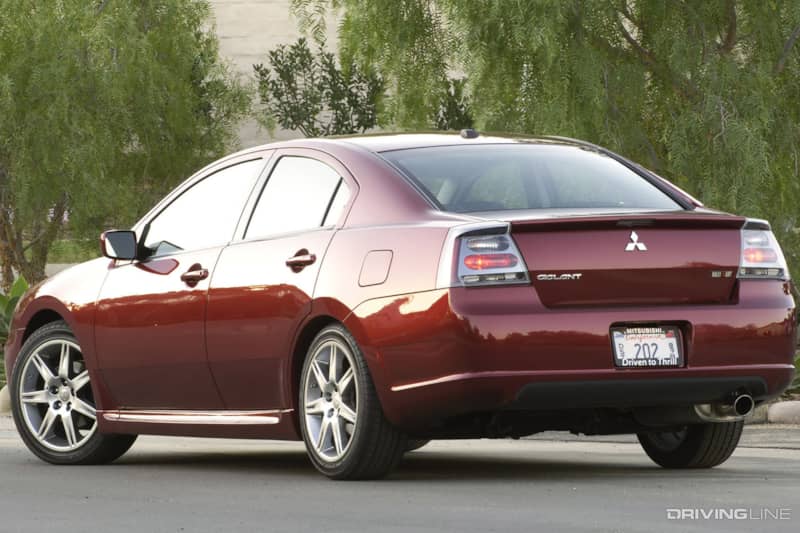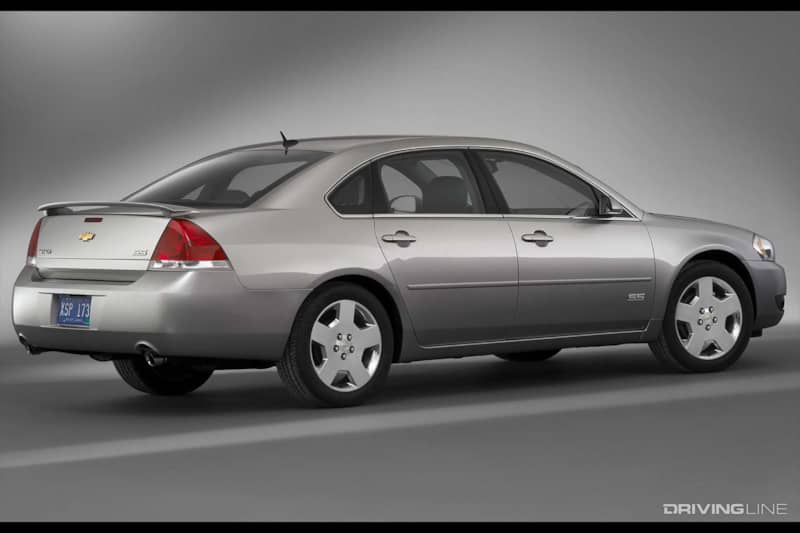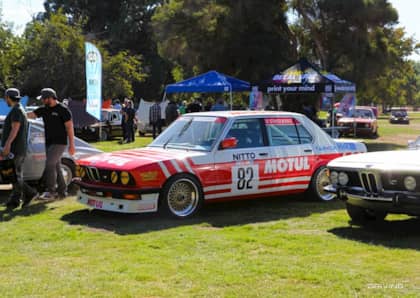Sleeper Status: 3 Forgotten Sedans of the 2000s
As you’ve no doubt heard in the news or seen on the roads, these days it’s all about the SUV and crossover, with traditional four-door sedans falling increasingly behind their high-riding counterparts in the sales race. For that reason, it only makes sense that we’ll see more and more performance versions of these SUVs like the recently introduced Ford Edge ST. It also reminds us of a time not too long ago when the sedan was still king and a number of brands decided to introduce factory hot rodded, front wheel drive midsize sedans.
Here are three in particular that take us back to those simple days of the mid-2000s.
1. Mitsubishi Galant Ralliart

Ah yes, Mitsubishi. While this brand has seemingly given up completely on the enthusiast market, there was a time not long ago when they built some of the most interesting performance cars on the market.

Of course, there was the legendary Lancer Evolution and the always popular Eclipse, but in 2007, Mitsubishi introduced a higher performance version of it’s midsize family sedan, known as the Galant Ralliart.

Rather than the turbo four and AWD you might expect from Mitsubishi the Galant Ralliart was front-wheel drive and a naturally aspirated 3.8L V6 making 258hp mated to a five-speed automatic transmission. When new, Car & Driver clocked the Galant Ralliart with a zero to 60 time of 6.1 seconds, which for the time was quite impressive—especially given the Galant’s weight and drivetrain.

The Galant never enjoyed the sales success of something like the Accord or Camry, and the Ralliart version has always been a rare sight on the road, especially now over a decade later. Unfortunately Mitsubishi stopped selling the Galant sometime ago, so it’s unlikely that we’ll ever see a follow up to this unusual but strangely appealing machine.

2. Chevy Impala SS V8 FWD

Nope, we aren’t talking about the recently departed Australian-built Chevy SS sedan or the B-Body Impala SS of the 1990s. We're talking about a car that came in between those: the V8 Impala SS of the late 2000s.

Unlike those cars, this V8 powered the front wheels. Yep, that’s right, it had a 5.3L “LS4” V8 that made 303hp while sitting transversely in the engine bay. It also has displacement on demand for better fuel economy while cruising.

As far as the looks go, the Impala SS didn’t look all too different from the standard Impalas, but there’s something strangely appealing about those under the radar rental car looks.

Sure, many modern V6s will out perform this particular V8 and there’s no doubt most people would prefer a RWD V8 performance sedan to this unusual family sedan, but this car is kind of charming. It might be unusual, but we dig the funkiness of the FWD Impala SS and can get on board with the idea of putting on a nice exhaust system to do front wheel burnouts with a carload full of people.

3. Nissan Altima SE-R

Hear the words “SE-R” and you’ll first think of the various hopped up Sentras Nissan has built over the years, but in 2005, Nissan decided to apply the same formula to the larger Altima. The result was a surprisingly cool Altima SE-R.

Powered by the ubiquitous VQ35DE V6, the Altima SE-R made 270hp and, like the Galant Ralliart, was also capable of hitting 60 mph in the low six second range. That said, acceleration wasn’t the only selling point.

What’s especially cool is that the Altima SE-R was available with a manual transmission and its chassis was quite athletic for a midsize family sedan. It even came with forged 18-inch wheels and high performance tires. We also like the interior, which takes a lot of inspiration from the Nissan 350Z of the same era, particularly the instrument binnacles over the middle of the dashboard.

While it’s true that one could also get a VQ35 engine in a RWD sedan with the Infiniti G35, the “wrong wheel drive” Altima SE-R has similar performance and a character that’s all it’s own.

So while it’s not likely that any of these factory hot rodded family sedans of the mid 2000s will ever become highly sought after collector items, they occupy a unique place in modern automotive history and take us back to a style of performance car that likely won’t be seen again.











